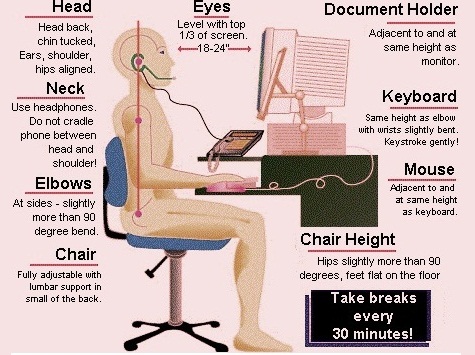Alternative Therapies
- Alternative Medicine
- Access Bars
- Access Body Processes
- Access Consciousness
- Access Energetic Faclift
- Acupressure
- Acupuncture
- Akashic Records
- Ancient Magnetism
- Angel Healing
- Aromatherapy
- Aura Reading
- Ayurveda
- Bach Flower Remedies
- Blueprint Numerology
- Breathwork
- Chakra Healing
- Cosmetic Acupuncture
- Crystal Healing
- Cupping Therapy
- Divine Healing Hands
- Distance Healing
- Emotional Freedom Technique (EFT)
- Energy Healing
- Energy Medicine
- Ergonomics
- Family Constellation
- Face Reading
- Fengshui
- Gaiadon Heart
- Geomancy
- Heal Your Life
- Graphology
- Holistic Solutions
- Holy Fire Reiki
- Homeopathy
- Ho'oponopono
- Humkara with Haleem
- Hypnotherapy
- Inner Child Therapy
- Intuitive Reading
- Jesus Reiki
- Jikiden Reiki
- Jin Shin Jyutsu
- Karuna Reiki
- Karmic Healing
- Lama Fera
- Lenormand Cards
- Light Language Healing
- Law of Attraction
- Manual Therapy
- Matrix Reimprinting
- Metaphor Therapy
- Meditation
- Mediumship
- Melchizedek Method
- Merlin Trinity Healing
- Merkaba Healing
- Money Reiki
- Motivational Counseling
- Mudra Healing
- Nakshatra Energies
- Naturopathy
- Neuro Linguistic Programming (NLP)
- Numerology
- NumeroVastu
- Oracle Cards
- Panchakarma (Ayurveda)
- Panchkarma Holistic Healing - Mind Control
- Past Life Regression
- Pendulum Dowsing
- Physiotherapy
- Pranic Healing
- Pranic Psychotherapy
- Pythagorean Numerology
- Quantum Touch Healing
- Pyramids
- Redikall Healing
- Reiki
- Rudraksh
- Runes
- Soul Plan Reading
- Sound Healing
- Star Magic Healing
- Space Clearing
- Sujok therapy
- Tarot
- Theta Healing
- Twin Flame Healing
- Twin Hearts Meditation
- Unani Medicine
- Yoga
- Wicca
- Womb Healing
Diseases & Conditions
- Acne & Pimples
- Allergies
- Arthritis
- Asthma
- Behavioural Disorders
- Cancer
- Dandruff
- Diabetes
- Emotional Problems
- Gallstones
- Gastritis
- Hairloss
- Heart Diseases
- Hormonal Problems
- Hypertension
- Immune Disorders
- Infections
- Infertility
- Jaundice
- Kidney Disorders
- Liver Disorders
- Menstrual Disorders
- Migraine
- Neck & Back Pain
- Obesity
- Osteoporosis
- Peptic Ulcer
- Prevention
- Prostate Problems
- Psoriasis
- Sexual Dysfunctions
- Sinusitis
- Sleep Disorders
- Skin Diseases
- Stress
- Thyroid Disorders
- Ulcerative Colitis
- Urinary Infections
General Wellness
Office Ergonomics Consultation in Vile Parle

Ergonomics is the study of your work environment and how you adapt. It takes into consideration your comfort level in your workstation. Invariably, individuals twist or strain to reach the keyboard or sit in odd contortions which result in neck, back, or wrist pain. Some simple workstation modifications, posture awareness, and chair consciousness can prevent problems.
Lower the height of the chair so that your back touches the back of the chair and you are comfortable.
Your feet should rest firmly on the floor slightly in front of you.
Center your keyboard in front of your monitor. Your eyes should be at the same level as the tool bar.
Keep the keyboard and mouse close to the edge of the desk.
Keyboard and mouse should be positioned so your arms fall naturally at your sides, with wrists straight out in front while typing/mousing.
Support your wrist and forearms with a gel pad or wrist support.
Avoid repetitive gripping of the mouse.
Keep frequently used items close - avoid reaching for anything!
Do wrist, finger, and hand exercises.
Sitting in a chair places 400 pounds of pressure on your lower back. If your back is unable to support your body, the strain which it is undergoing will affect other areas of your body as well, including your hands, arms, and wrists.
There are a number of steps you can take to reduce strain as you work. First, consider your desk posture. Be sure to sit with your back low against the back of your chair. You may need to roll up a towel or buy a lumbar roll to maintain the natural curve of your spine. Be sure the back of the head is lifted, the breastbone is lifted, and the lower back is supported. Your back should be angled backward a few degrees to widen the angle between the torso and the thighs: this increases blood flow plus reduces the compression of the spine.
Your arms should be relaxed and loose at your sides, with your forearms and hands parallel to the floor. The correct wrist and hand position should create a 90-degree angle and the wrists should not be flexed or extended, but rather should be in a neutral position. Keep your thighs at a right angle to your torso, and your knees at a right angle to your thighs.
Be sure to change your position frequently, and avoid using excessive force while typing at the keyboard. Over time, a heavy typing style could aggravate hand, wrist, or finger pain symptoms by placing joints and tissues under continual stress. Lastly, consider the use of ergonomic devices such as back supports, mouse wristpads, and keyboard gel wristpads


